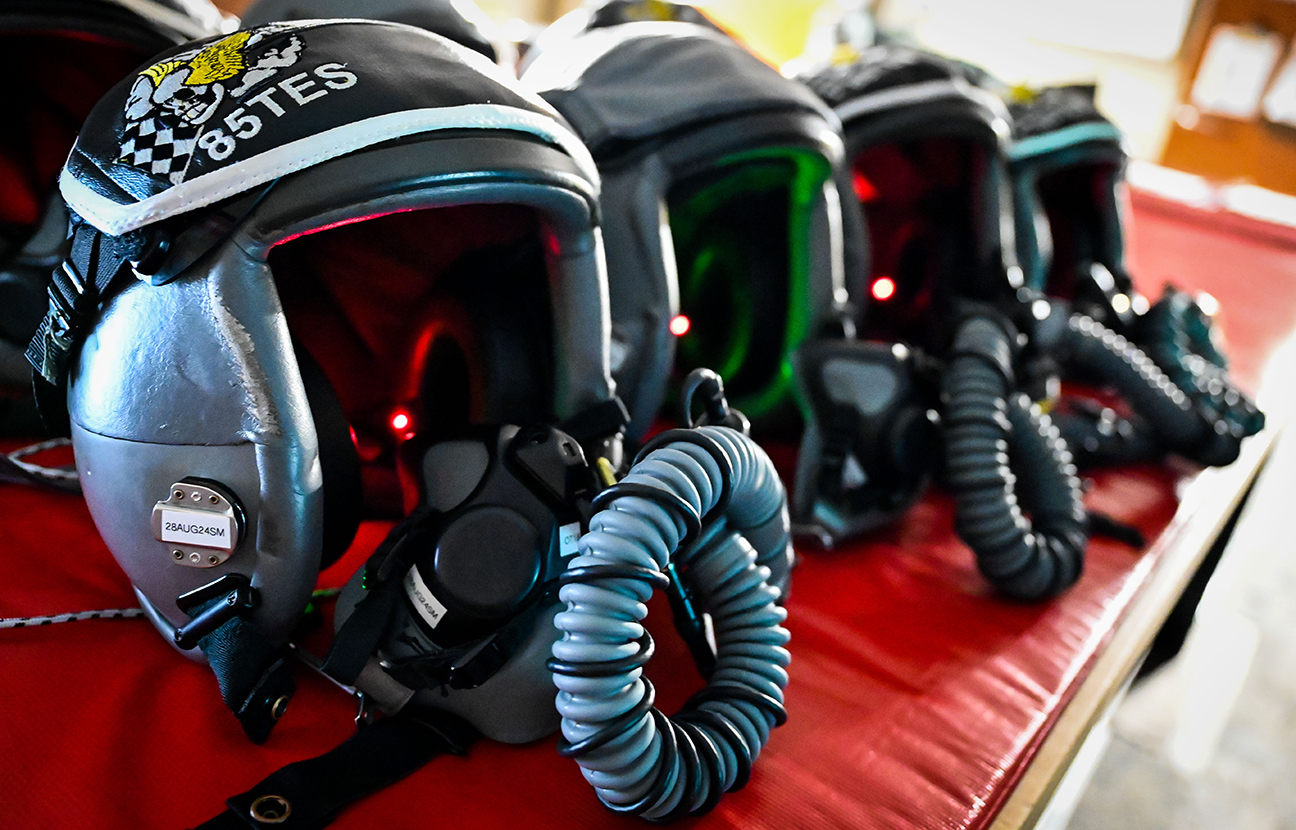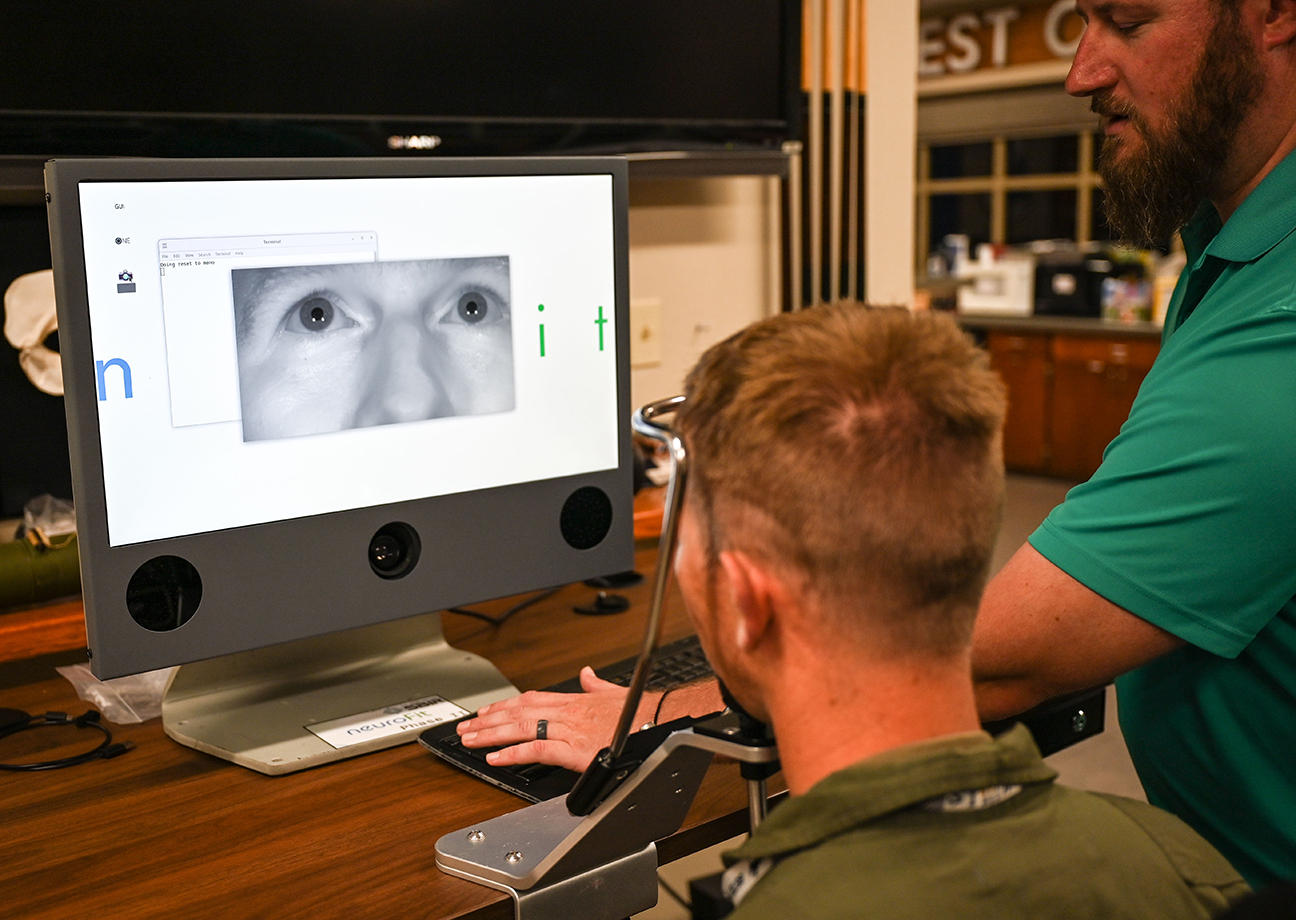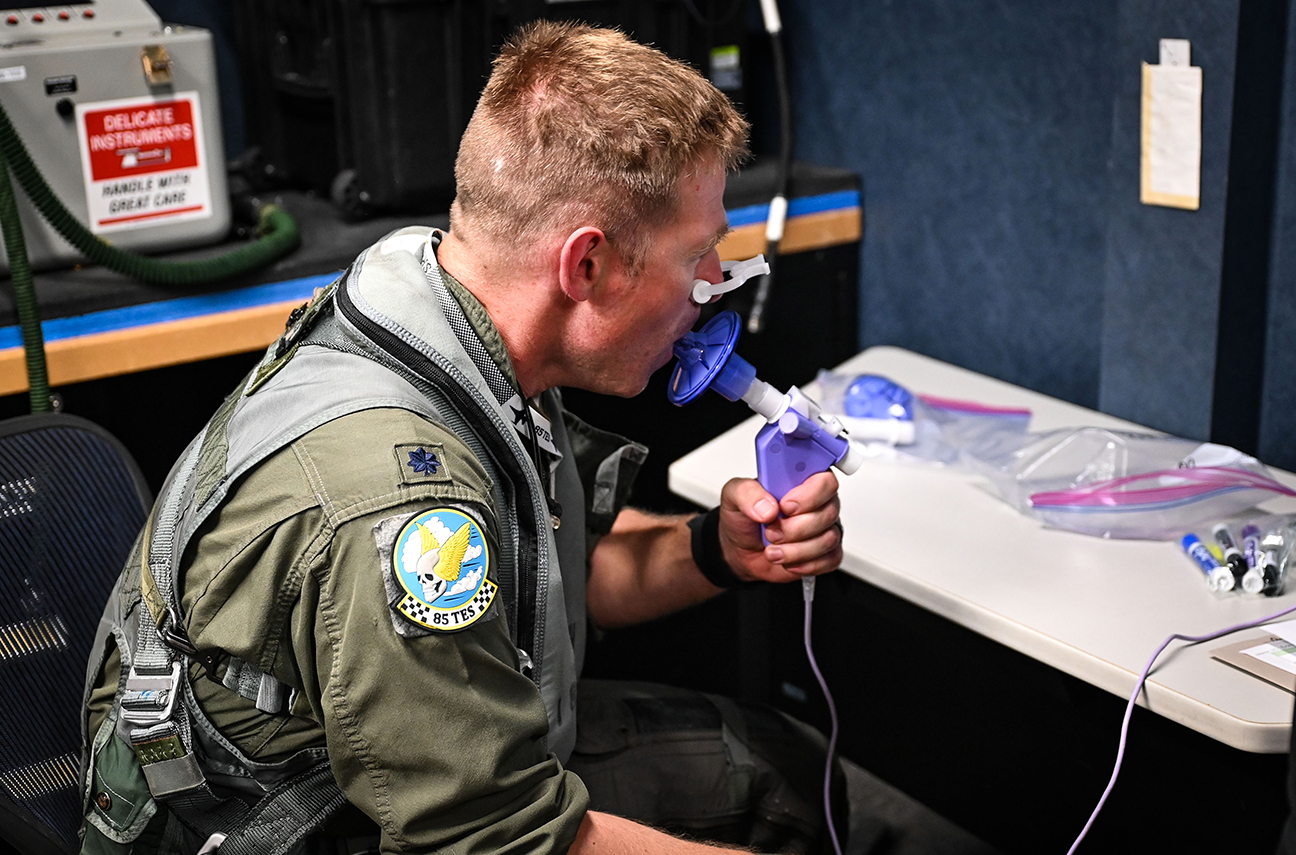F-15 human performance tested during Bamboo Eagle
EGLIN AIR FORCE BASE, Fla. – The 85th Test and Evaluation Squadron, 59th Test and Evaluation Squadron, and Air Force Research Laboratory’s 711th Human Performance Wing collected human performance data on F-15EX/E aircrew during Bamboo Eagle 24-3, from August 5-8.
A typical F-15 sortie lasts a few hours, but the extended missions provided insights into how prolonged flights affect aircrew performance. The missions, each lasting about 10 hours in duration, involved four separate sorties totaling nearly two days of continuous data collection. This extended testing helps refine procedures for managing long-duration operations and enhances aircrew readiness for potential conflicts in the Indo-Pacific region.

Lt. Col. Matthew Russel, 85th Test and Evaluation Squadron Director of Operations, conducts an eye-tracking assessment to collect data for human performance testing at Eglin Air Force Base, Florida, August 8, 2024. The testing focused on analyzing the effects of long duration flights on aircrew performance, gathering real-time data directly from pilots before, during and after flight. (U.S. Air Force photo by 1st Lt. Rebecca Abordo)
“Our data collection plan is extremely unique because it gathers real-time data on multiple physiologic and cognitive processes directly from pilots during flight,” said Chris Dooley, 711 HPW core research area lead. “This data will help us address two key questions: the impact of long duration sorties on aircrew and what recovery is needed before they are fit for another flight.”
Researchers measured glucose levels, sleep recovery, cortisol levels, cognitive reaction times and hydration. The teams monitored aircrew members before, during and after the flights to gather comprehensive data.
Inflight physiologic systems, with sensors integrated into the aircrew’s helmets, captured real-time physiological data. They also used glucose monitors, collected waste samples, and recorded weight to assess hydration and energy levels. Post-flight, the team measured cognitive reaction times using an operational vision testing machine.

Inflight physiologic monitoring systems light up and prepare to collect physiological data in flight with the 85th Test and Evaluation Squadron at Eglin Air Force Base, Florida, August 6, 2024. The human performance testing focused on analyzing the effects of long duration flights on aircrew performance, gathering real-time data directly from pilots before, during and after flight. (U.S. Air Force photo by 1st Lt. Rebecca Abordo)
BE 24-3 also marked the first in-flight testing of the FOCUS Mission Readiness App, a fatigue risk management mobile application for warfighters developed by AFRL’s Human Effectiveness Directorate. F-15EX/E aircrew completed the Psychomotor Vigilance Test (PVT), which provides an at-the-moment fatigue assessment.
“We used PVT data in the application to provide more individualized fatigue assessments and predictions from our modeling capabilities,” said Dr. Megan Morris, 711 HPW research psychologist and core research area lead.
The FOCUS app provides real-time, individualized fatigue assessments and predictions based on sleep and behavioral data, as well as personalized fatigue countermeasure suggestions, Morris said. The app aims to increase performance and decrease safety risks during missions.
“This testing provides quantifiable data to show how our bodies are reacting to certain inputs, whether that’s stress, dehydration, or eating different types of foods,” said Maj. David Partin, 85th TES F-15 Division Chief. “That data informs the need for the education, training and preparation necessary before flight.”
Lt. Col. Matthew Russel, 85th TES Director of Operations, and Partin both collected performance data during their sortie in the F-15E.
“Ultimately, human performance dictates our battle rhythm,” said Russel. “Prioritizing self-care is essential for effective recovery and sustaining tactical operations in forward operating locations.”

Lt. Col. Matthew Russel, 85th Test and Evaluation Squadron Director of Operations, conducts an eye-tracking assessment to collect data for human performance testing at Eglin Air Force Base, Florida, August 8, 2024. The testing focused on analyzing the effects of long duration flights on aircrew performance, gathering real-time data directly from pilots before, during and after flight. (U.S. Air Force photo by 1st Lt. Rebecca Abordo)
This testing helps refine tactics, techniques, and procedures (TTPs) by offering insights into how long flights affect energy levels and cognitive functions. The results will help assess risks associated with long duration flights and improve preparation for extended missions.
“For operational test, we want to start looking at the best way to inform TTPs for the future,” said Abigail Santek, 59th TES Human Performance Program Analyst. “Efforts like this are a great opportunity for us to educate operators on how to improve performance indicators such as sleep, nutrition, and fatigue management strategies.”
The partnership and collaboration between AFRL and the 53rd Wing’s operational test units was integral to the comprehensive data collection plan.
“Diversity of thought and background is critical in human performance research,” said Dooley. “The relationships we have between AFRL and operational test, united by a common goal, enhances our ability to drive significant advancements.”
The units plan on collecting and testing more human performance data during the next iteration of Bamboo Eagle. TEST!

Lt. Col. Matthew Russel, 85th Test and Evaluation Squadron Director of Operations, performs a spirometry respiratory test to check how narrow the airways in his lungs are after a long duration sortie at Eglin Air Force Base, Florida, August 8, 2024. The human performance testing focused on analyzing the effects of long duration flights on aircrew performance, gathering real-time data directly from pilots before, during and after flight. (U.S. Air Force photo by 1st Lt. Rebecca Abordo)
